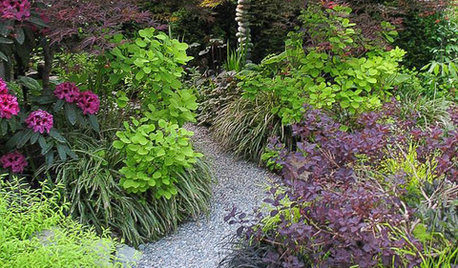cattail reeds
fulton
14 years ago
Related Stories

FALL GARDENINGHouzz Call: Show Us Your Autumn Views
Share your pictures of fall foliage and decor in the Comments. Your photos may be featured in an upcoming story!
Full Story
EARTH DAYGrow a Beautiful Garden With Ecofriendly Greywater
Reducing home water waste means lower bills and a healthier planet. Here's how to set up a greywater home irrigation system that can help
Full Story
LANDSCAPE DESIGNSecrets of a Successful Water Garden
Relax. Having a water garden is much easier once you understand the basics
Full Story
LANDSCAPE DESIGN5 Garden Path Looks for an Enchanting Journey
Take your pathway from predictable to exceptional, for a truly moving garden experience
Full StorySponsored
Your Custom Bath Designers & Remodelers in Columbus I 10X Best Houzz



helenh
digdirt2
Related Discussions
Increasing Soil Organic Matter
Q
Bog, Pond, or Vernal Pool?
Q
Apples in compost
Q
Emergency!!! Dog Help Please!
Q
trudi_d
digdirt2
trudi_d
zebraman
instar8